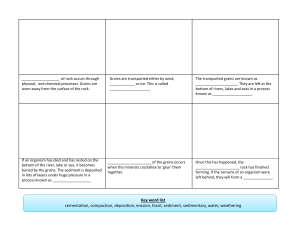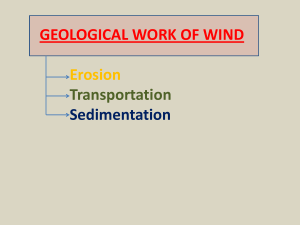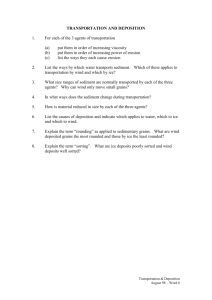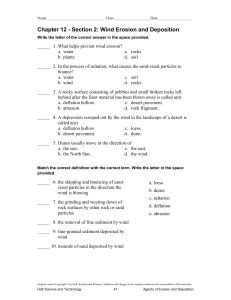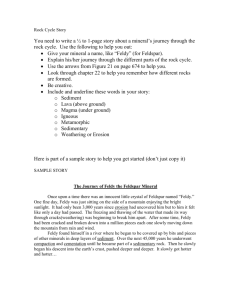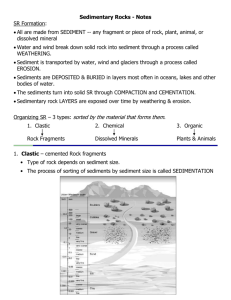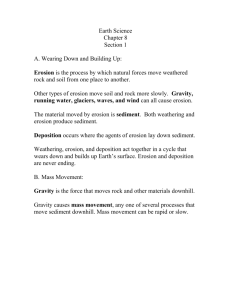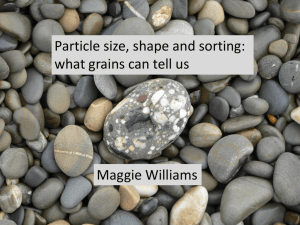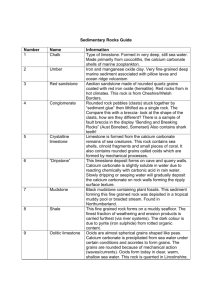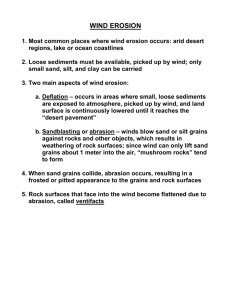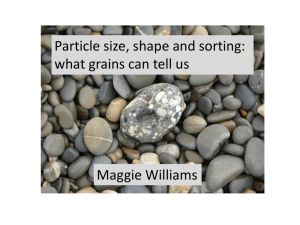Erosion
advertisement
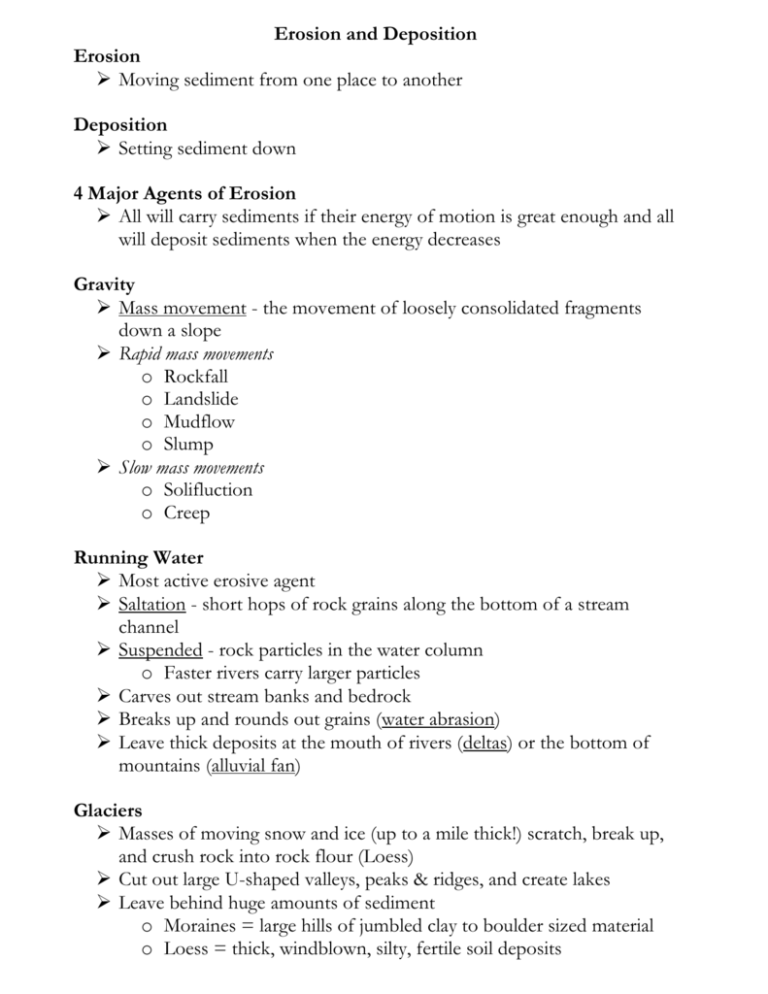
Erosion and Deposition Erosion Moving sediment from one place to another Deposition Setting sediment down 4 Major Agents of Erosion All will carry sediments if their energy of motion is great enough and all will deposit sediments when the energy decreases Gravity Mass movement - the movement of loosely consolidated fragments down a slope Rapid mass movements o Rockfall o Landslide o Mudflow o Slump Slow mass movements o Solifluction o Creep Running Water Most active erosive agent Saltation - short hops of rock grains along the bottom of a stream channel Suspended - rock particles in the water column o Faster rivers carry larger particles Carves out stream banks and bedrock Breaks up and rounds out grains (water abrasion) Leave thick deposits at the mouth of rivers (deltas) or the bottom of mountains (alluvial fan) Glaciers Masses of moving snow and ice (up to a mile thick!) scratch, break up, and crush rock into rock flour (Loess) Cut out large U-shaped valleys, peaks & ridges, and create lakes Leave behind huge amounts of sediment o Moraines = large hills of jumbled clay to boulder sized material o Loess = thick, windblown, silty, fertile soil deposits Wind Deflation - picks up only smallest grains Saltation - sand grains skip along surface Causes wind abrasion, makes ventifacts - rounded rocks Leaves behind dunes Can be damaging (example: Dust Bowl of the 1930’s)
